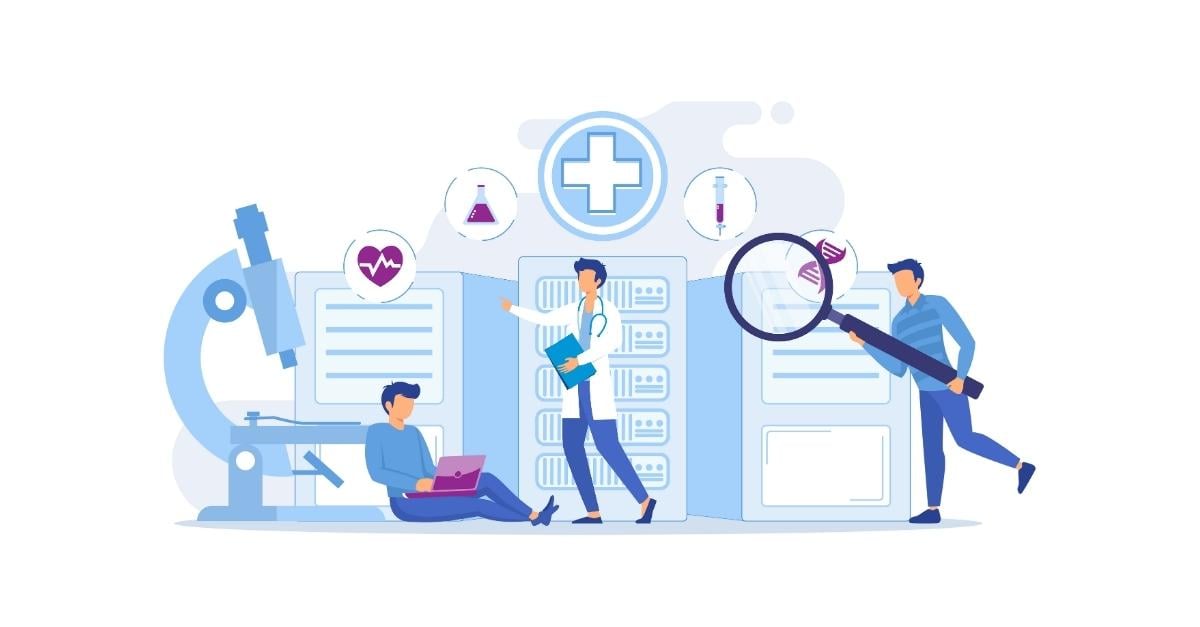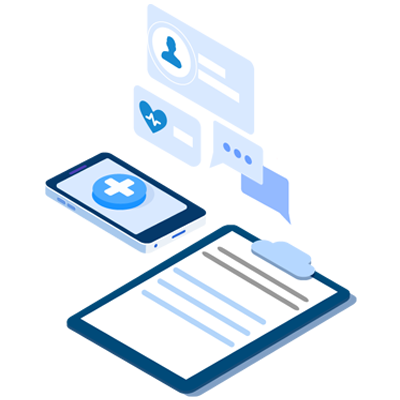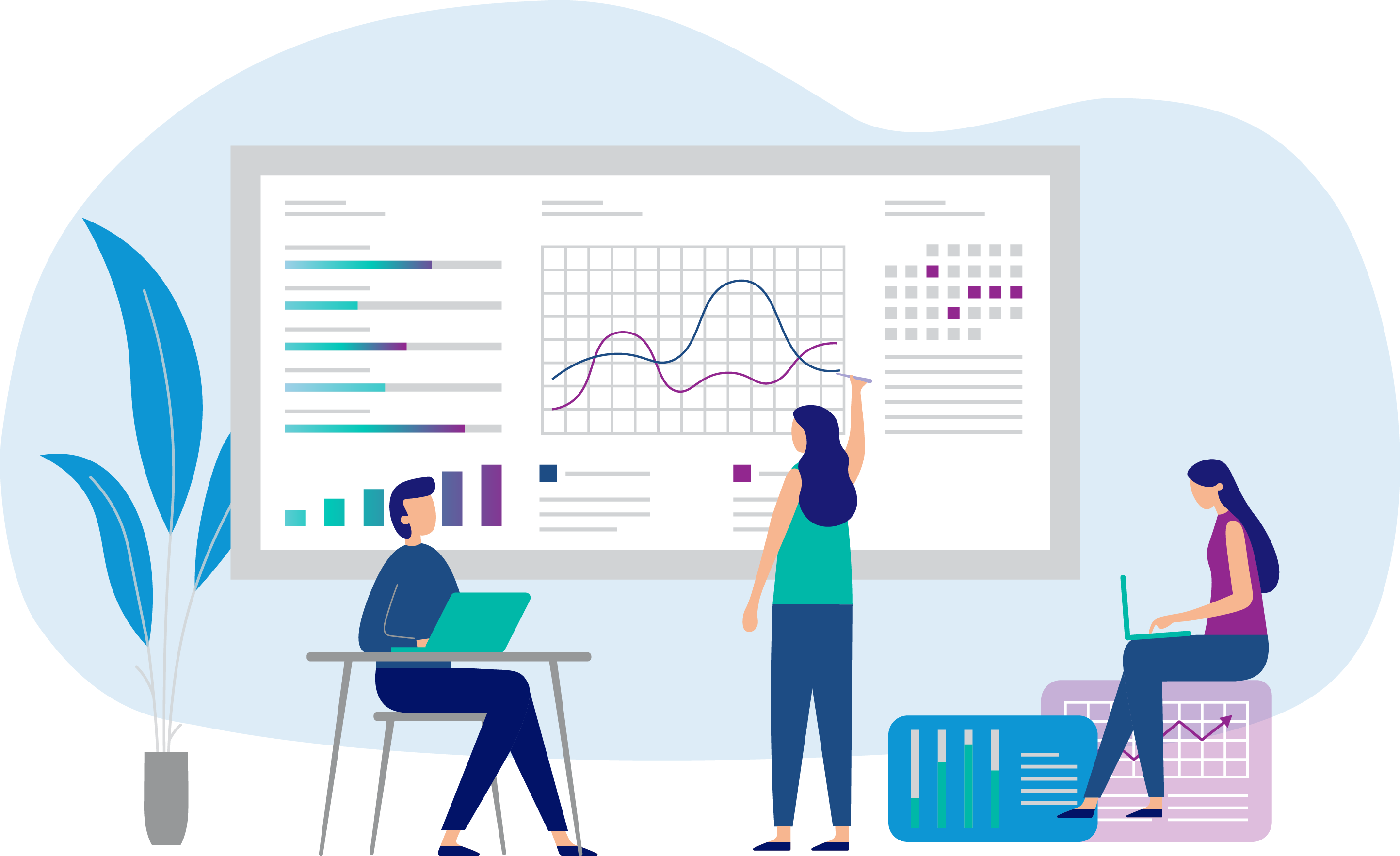Predictive analytics is a rapidly evolving field with tremendous potential for transforming healthcare delivery. As more data becomes available and predictive analytics technology advances, its impact on healthcare will only continue to grow. In fact, the healthcare predictive analytics market size is expected to witness more than 22% growth by 2028.
Healthcare providers and IT professionals must understand this technology's benefits and leverage it to improve patient care and reduce costs.

What is Predictive Analytics in Healthcare?
Predictive analytics in healthcare is an emerging field that uses data-driven algorithms and machine learning capabilities to analyze health-related data and predict future patient outcomes.
Predictive analytics uses various methods — including big data analysis, natural language processing, deep learning, and artificial intelligence — to gather insights from large amounts of health-related data. This data can include demographic information such as age, ethnicity, and gender, medical records, lifestyle habits, and environmental factors. Predictive analytics platforms then analyze the data to identify patterns predictive of patient outcomes. These patterns can help predict a patient's treatment progression, develop more effective treatments, and improve operational efficiencies.
How is Predictive Analytics Being Used in Healthcare?
Predictive analytics can be used to identify patients at risk for certain diseases, develop more effective treatment plans, improve operational efficiencies, reduce healthcare costs, and enhance the quality of care.
Here we explore 3 key use cases for predictive analytics in healthcare:
1. Early Detection, Intervention & Prevention of Diseases
A predictive analytics model based on electronic health records successfully identified future type 2 diabetes patients with an accuracy rate of 87%, a study found. By examining historical medical records, healthcare providers can identify potential risk factors leading to serious illnesses such as diabetes or heart disease. Early detection enables faster and more effective treatment plans, resulting in better patient outcomes and decreased strain on the healthcare system.
2. Increase Patient Engagement
Patients with chronic conditions like diabetes, hypertension, and heart disease are often burdened with decision-making. From medication adherence to food intake and maintaining an active lifestyle, these patients have to make more decisions on a daily basis than an average person. Predictive analytics can help reduce decision-making fatigue by leveraging sophisticated algorithms, AI/ML techniques, and vast amounts of data to provide personalized predictions on how diet, exercise, and other behaviors will affect their health in the short and long term. It can also offer actionable advice, create alerts, and curate educational materials or digital tools to help these patients make positive lifestyle changes.
3. Improve Patient Outcomes
Predictive models can be developed by collecting and analyzing data from different sources, such as patient records, laboratory test results, and imaging scans, to assist physicians in making more informed decisions about their patients' care. With the help of predictive analytics, healthcare providers can improve the accuracy of diagnoses, identify potential medical issues before symptoms become noticeable, and detect subtle changes in a patient's condition that may indicate an illness or injury.
An example of how predictive analytics is being used to improve patient outcomes comes from the Silicon Valley start-up, CloudMedX. This company specializes in leveraging predictive analytics to optimize patient and financial outcomes. Utilizing Natural Language Processing (NLP) and deep learning algorithms, their AI Assistant can obtain existing data from electronic medical records, output clinical insights for healthcare professionals, and aid both doctors and patients in making data-driven decisions. By applying this solution to multiple areas of medicine, such as congestive heart failure, liver cancer, ALS, renal failure, and orthopedic surgery, the company has seen promising results in improving patient outcomes.
How Predictive Analytics Applies to Remote Patient Monitoring
Remote patient monitoring (RPM) programs can collect real-time data on changes in a patient's condition over weeks, months, or even years. Trends that will help tailor personalized care plans to meet each patient's individual needs can be identified by applying predictive analytics to this data. This allows healthcare providers to develop more targeted treatments for larger groups of patients with similar characteristics, leading to improved patient outcomes. With the help of remote monitoring technology and predictive analytics, healthcare providers can ensure they deliver the most effective and personalized treatment options to their patients.

Announcing the Launch of HRS Analytics
The new HRS Analytics suite will help healthcare executives and clinicians drive further value from their remote monitoring and care management programs with insights regarding workforce deployment, operational efficiencies, cost savings, and revenue growth opportunities.
What HRS is Doing to Stay Ahead
With over a decade of experience, HRS is an established provider of best-in-class telehealth and RPM solutions. We’ve taken a number of steps to stay ahead of new technology and trends. Earlier this year, we introduced our Client Advisory Board which brings together innovative and experienced healthcare leaders to provide strategic guidance as we develop and bring new products to the market.
Our in-house analytics and product teams also constantly work to identify and prioritize new technological advances that will help us better serve our clients and patients. A recent development was the launch of HRS Analytics, marking our entry into the world of advanced analytics and reporting. HRS Analytics will drive ROI for our clients by providing insights into workforce deployment, operational efficiencies, cost savings, and revenue growth opportunities.
As an experienced digital health solutions provider, we see the opportunity for predictive analytics in healthcare to improve patient outcomes and reduce costs, but we also know that companies can't just feed protected health information into these data processing models. New healthcare technology must be developed and deployed to comply with existing data security and HIPAA regulations. At HRS, we are committed to maintaining our SOC-2 cyber security compliance and developing innovative solutions that add value while protecting patient data.
Revolutionizing Healthcare with RPM and Predictive Analytics
As remote patient monitoring becomes more widespread, healthcare providers are amassing vast amounts of data that can be leveraged to improve patient outcomes, personalize care, increase patient engagement, and reduce healthcare costs. Predictive analytics has the potential to drive significant innovation in healthcare through RPM, but providers must prioritize data security and patient safety when approaching new technologies.

Explore the latest RPM advancements
Contact us to learn more about the HRS Analytics and Reporting suite and review the latest technological advancements in RPM.